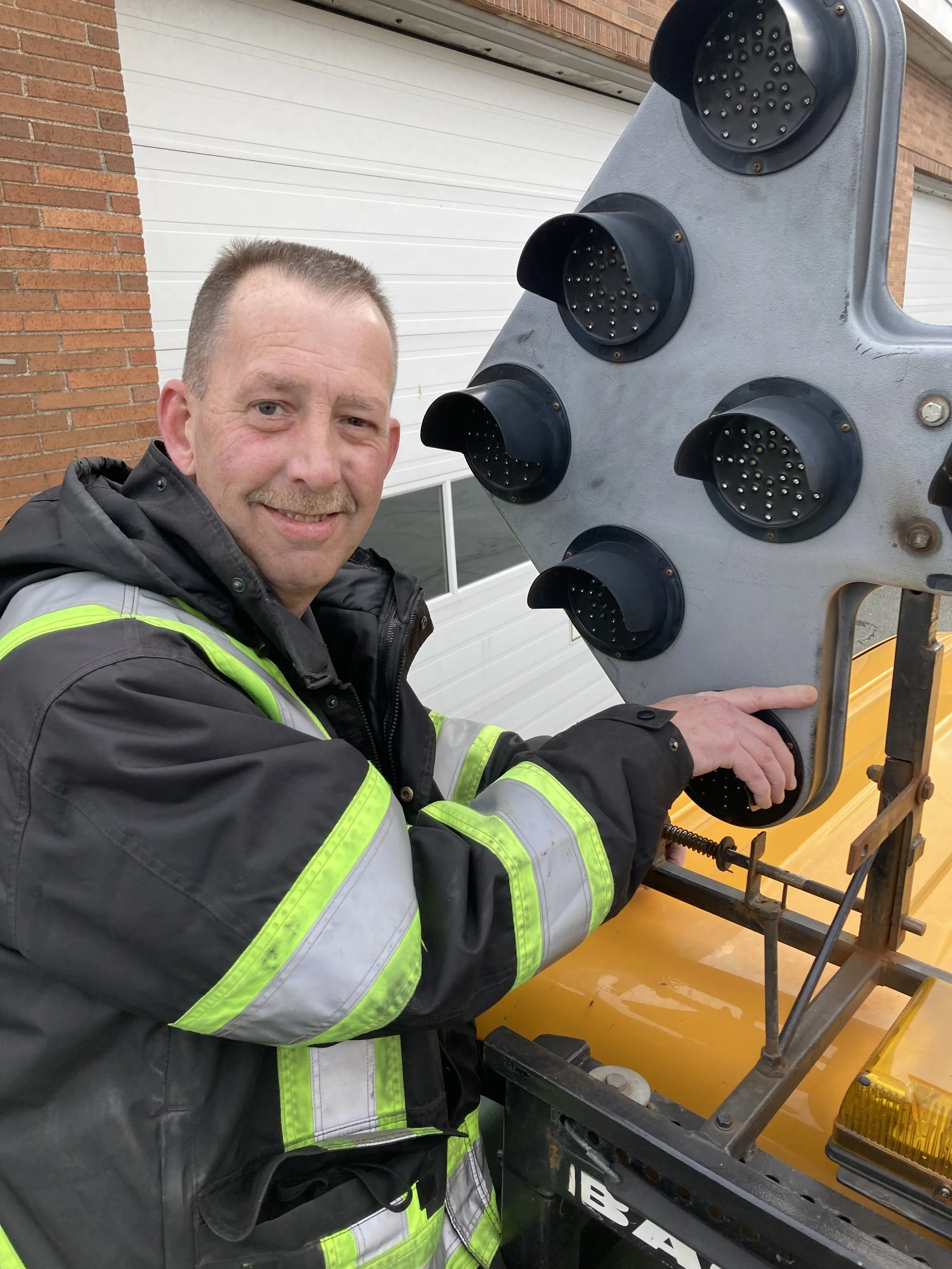Maintenance staff ready for any weather
“If there’s an accident on one of the bridges in the summer, traffic challenges can ensue. If it happens in the winter, the stakes soar. Not only does it become inconvenient for the entire city, but it can be very dangerous for people facing the elements.”
Dave Power, Safety Manager
When snow starts to fall and conditions are icy, the HHB maintenance team is likely already on the road. Responsible for two of the most highly scrutinized traffic corridors in the province, crews demonstrate an unwavering commitment to safety and efficiency in the face of nature’s relentless challenges.
To mitigate these risks, HHB employs a skilled staff and advanced technology. The combined length of the two bridges is less than three kilometres, but HHB manages more than 20 kilometres of roadways, including four building locations with parking lots and a full interchange off Highway 111.
Maintenance technician Bill Welton highlighted the unique challenges of maintaining the bridges during winter. “They are steel. They’re over water. The tide goes in, the tide goes out, so there’s constant change of the conditions. You get times when one of the bridges can be covered in snow and everywhere else is nice. You have to be paying attention.”
Continuous monitoring of specific conditions on the Macdonald and MacKay bridges is essential. Each bridge has two weather stations – locations where sensors record winds, road deck temperatures and moisture levels, even detecting the presence of ice.
An HHB truck is equipped with that same weather tracking system and can take real-time photos, providing crucial data as it travels the routes. Other trucks have road temperature sensors, aiding in determining when salting or other actions are required.
Anticipation is a key strategy in winter maintenance efforts. “That’s where experience comes into play. You have to get used to the signs,” said Welton. “If we see the bridge temperature and the dew point dropping to a certain amount, we can apply a small amount of salt to it and that starts to bring the road temperature up, just slowly. If you put too much salt, too fast, it turns into frost on the bridge.”
If there’s a danger of freezing rain, three trucks can apply a salt brine to the bridge decks. All eight trucks can load and apply salt, and four can pre-wet the salt before application. This process allows salt to activate more quickly and help it adhere to the decks even if it’s windy.
Plowing is done by groups of vehicles working in tandem to minimize delays and maximize efficiency and safety. Two loaders and two trucks can work together on the MacKay, effectively creating a giant blade to cover more lanes at once. On the Macdonald, three smaller vehicles are used, with plows equipped with rubber cutting edges to protect the road surface. Additionally, a specialized sidewalk machine ensures clear pathways for pedestrians and cyclists.
None of the work could be accomplished without HBB employees who work in all conditions. Their dedication and expertise are the cornerstone of HHB’s efforts to keep the bridges safe and traffic flowing smoothly, no matter the season.




